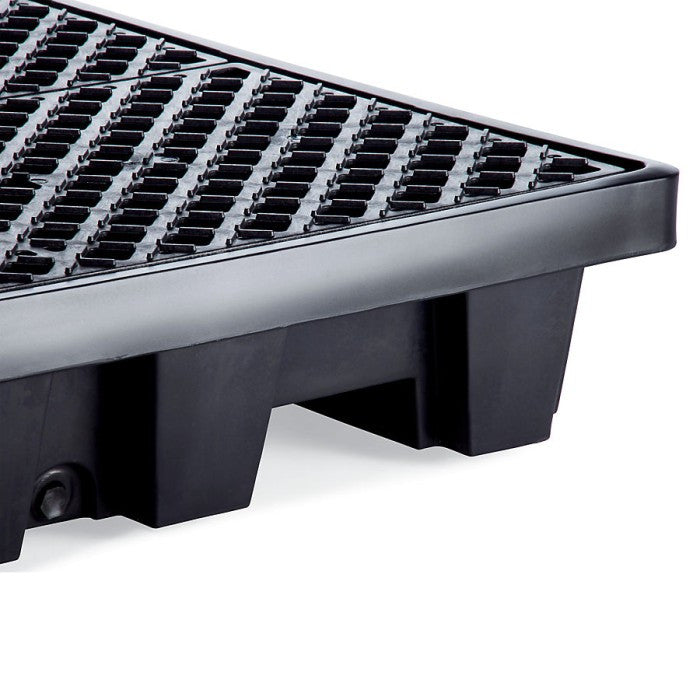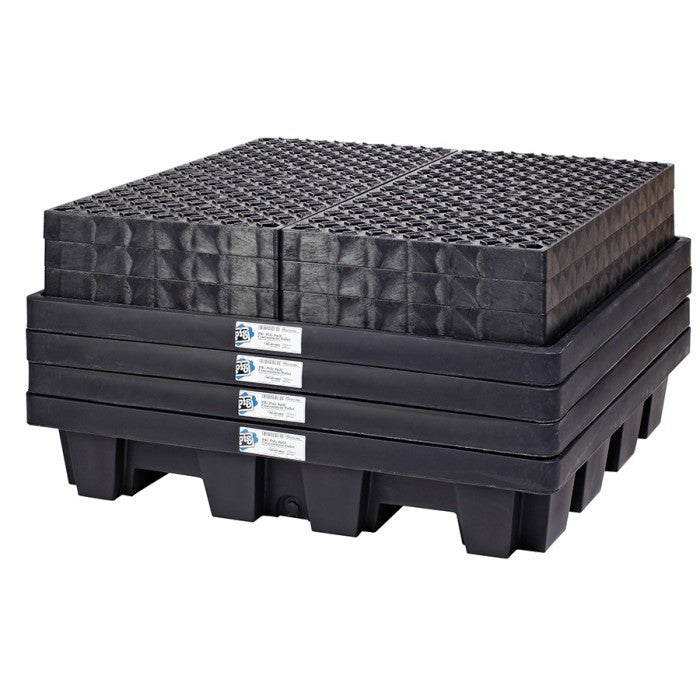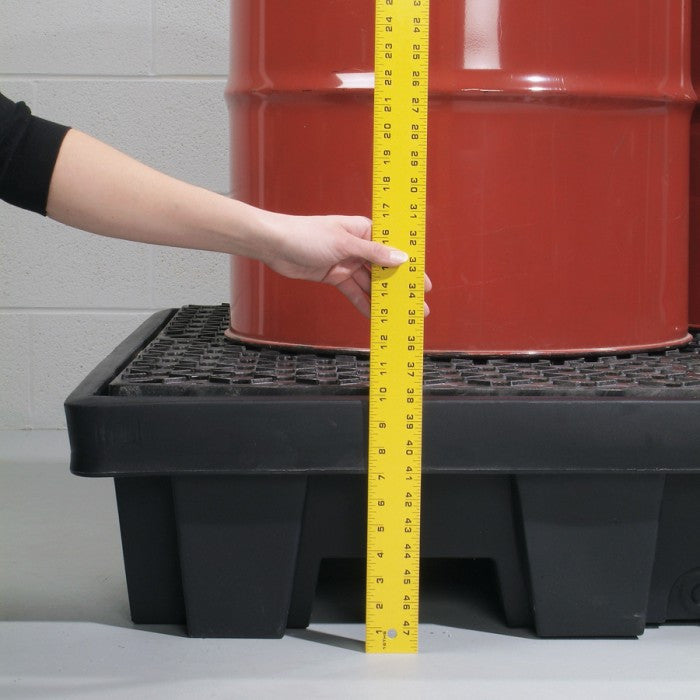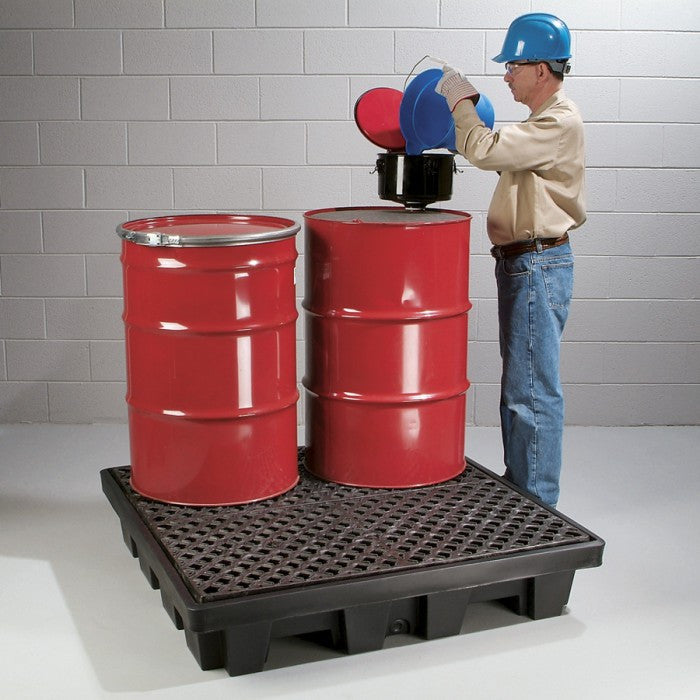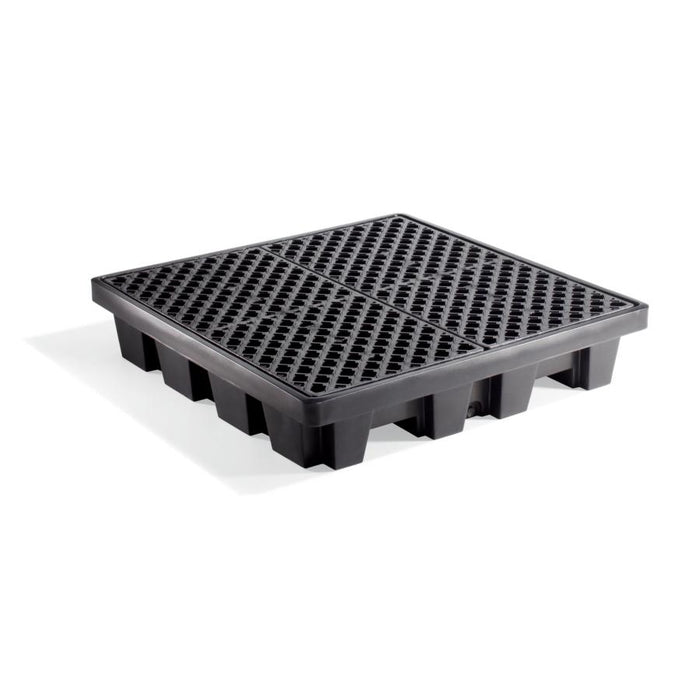
PIG® 4-Drum Poly Spill Containment Pallet - PAK210
PAK210
The strongest standard pallet you can buy for everyday drum storage. Tough, affordable containment.
- 4 Drum
- 2,722kg Load Capacity UDL
- 250L Sump Capacity
Description
- The strongest standard pallet you can buy for everyday drum storage
- 2,722kg UDL capacity is strong enough to support four fully loaded steel or poly drums
- Low 25cm height means loading and unloading require less effort and drum tops are within easier reach
- Molded-in sump catches leaks, drips and spills to help you comply with regulations and keep your storage areas clean and safe
- Low-density polyethylene (LDPE) construction resists UV rays, rust, corrosion and most chemicals
- Textured grating adds traction and lifts out for easy sump access
- 2-way forklift entry allows easy movement from either direction (unloaded only)
- Nestable design permits stacking when not in use; lowers cost of bulk shipping
- Compact footprint reduces floor space needed for drum storage
- Optional drain plug lets you empty sump without removing drums or grating
- We test all of our PIG Containment Pallet designs at max load for months to ensure they can handle full capacity at your facility
Specifications
| Color: | Black |
| Dimensions: | 130cm W x 130cm L x 25cm H |
| Recycled Content: | 40% Post-Industrial Recycled Polyethylene |
| Sump Capacity: | 250L |
| Load Capacity UDL: | 2722 kg |
| Capacity: | Four 210-litre Steel Drums |
| Dimensions (Fork Pocket): | 19.8cm W (at base) tapering to 17.8cm W (at top) x 7.6cm H |
| Drain: | No |
| Fork Truck Access: | Two-Way, Move Unloaded Only |
| Grates: | Two 122cm L x 61cm W |
| Distance Between Fork Pockets: | 41cm |
| Sold as: | 1 each |
| Weight: | 36.3kg |
| Composition: | 100% Polyethylene (LDPE) w/ UV Inhibitors |
| # per Pallet: | 12 |
Additional Information
Product Data Sheet (PDS)
Chemical Compatibility Guide
Hazardous And Other Wastes (Management and Transboundary Movement) Rules, 2016, Chapter 2, (6), (a)
The occupier shall take all the steps while managing hazardous and other wastes to contain contaminants and prevent accidents and limit their consequences on human beings and the environment;

